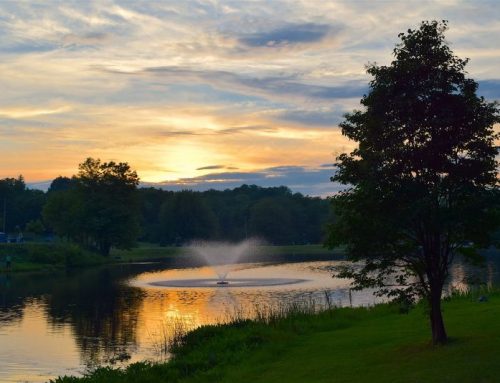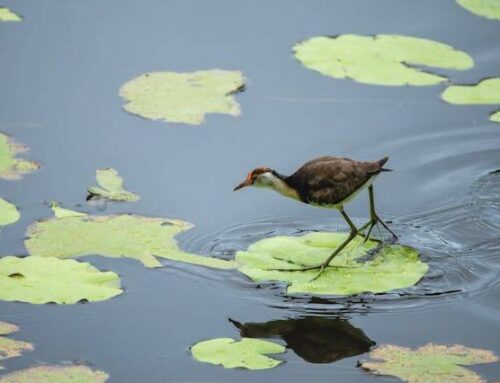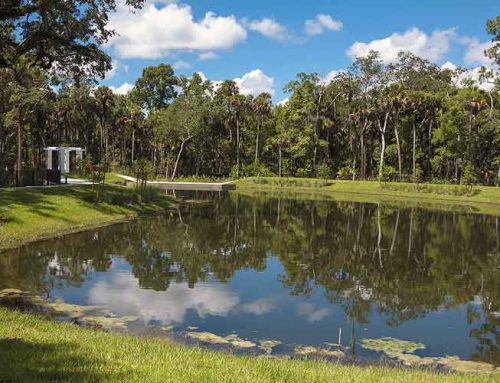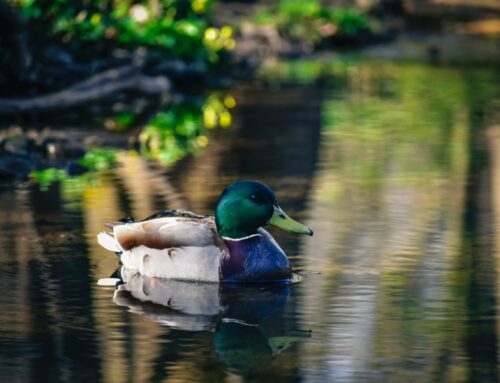As the leaves begin to change color and the air grows crisp, pond owners must shift their focus to autumn pond care. The falling temperatures and changing environment require specific pond maintenance to ensure your pond remains healthy and vibrant through the colder months. Here is a simple guide will walk you through essential tips and techniques to prepare your pond for the autumn season.
Understanding the Autumn Pond Ecosystem
Before diving into maintenance tips, let’s take a moment to understand how your pond’s ecosystem changes during autumn:
- Decreased Sunlight: Shorter days mean less sunlight for aquatic plants.
- Falling Temperatures: Water temperatures begin to drop, affecting fish metabolism and plant growth.
- Leaf Litter: Deciduous trees shed leaves, which can accumulate in your pond.
- Algae Changes: Some algae types may flourish in cooler temperatures.
With these changes in mind, let’s explore the essential maintenance tasks for autumn pond care.
1. Leaf Management: Preventing the Fall Foliage Fallout
Fallen leaves can wreak havoc on your pond if left unchecked. They:
- Decompose and release harmful nutrients, promoting algae growth
- Consume oxygen as they break down, potentially harming fish
- Clog filters and pumps, reducing water circulation
- Install a Pond Net: Cover your pond with a fine-mesh net to catch falling leaves before they enter the water.
- Regular Skimming: Use a pond skimmer or net to remove any leaves that bypass your cover.
- Trim Nearby Plants: Prune overhanging branches to minimize leaf drop into the pond.
2. Water Quality Management: Maintaining the Balance
Autumn’s changing conditions can upset your pond’s delicate chemical balance, potentially harming fish and plants.
- Regular Testing: Check pH, ammonia, nitrite, and nitrate levels weekly.
- Partial Water Changes: Perform 10-15% water changes bi-weekly to maintain water quality.
- Adjust Feeding: As temperatures drop, reduce fish feeding to prevent excess waste.
3. Plant Care: Preparing for Dormancy
Aquatic plants play a crucial role in your pond’s ecosystem, but they require special care as they prepare for winter dormancy.
- Trim Hardy Plants: Cut back hardy marginal plants to about 2 inches above the water line.
- Remove Tropical Plants: Take out non-hardy tropical plants and store them indoors for the winter.
- Divide Overgrown Plants: Autumn is an excellent time to divide and repot overgrown aquatic plants.
4. Fish Care: Supporting Your Aquatic Friends
Fish become less active and more vulnerable as temperatures drop, requiring special attention to maintain their health.
- Gradual Feeding Reduction: Slowly decrease feeding amounts and frequency as water temperatures cool.
- Switch to Wheat Germ Food: When water temperatures consistently drop below 60°F (15°C), switch to a wheat germ-based fish food for easier digestion.
- Monitor Behavior: Watch for signs of illness or stress in your fish, such as lethargy or unusual swimming patterns.
5. Equipment Maintenance: Preparing for Winter
Properly maintained equipment ensures your pond continues to function efficiently through autumn and into winter.
- Clean Filters: Thoroughly clean biological and mechanical filters to prevent clogging.
- Check Pumps: Inspect and clean pumps, replacing any worn parts.
- Prepare Heaters: If you use pond heaters, test them now to ensure they’re ready for winter.
6. Algae Control: Managing Autumn Blooms
Some algae types thrive in cooler temperatures, potentially causing issues in your pond.
- Manual Removal: Use a pond rake or net to remove string algae.
- Barley Straw: Add barley straw or barley straw extract to naturally inhibit algae growth.
- UV Clarifiers: Consider using a UV clarifier to control suspended algae.
7. Depth Management: Ensuring Adequate Water Levels
Maintaining proper water depth is crucial for fish health and equipment function during colder months.
- Top Off Water Levels: Keep the pond filled to its normal level to provide adequate space for fish.
- Check for Leaks: Inspect the pond liner and edges for any leaks or damage.
8. Beneficial Bacteria: Boosting Your Pond’s Immune System
Beneficial bacteria help break down organic matter and maintain water quality, but their activity slows in cooler temperatures.
- Add Cold Water Bacteria: Introduce cold water bacterial treatments designed to work in lower temperatures.
- Continue Regular Dosing: Maintain a consistent bacteria addition schedule throughout autumn.
9. Winterization Planning: Looking Ahead
While focusing on autumn care, it’s wise to start planning for winter to ensure a smooth transition.
- Research Winter Equipment: Investigate pond de-icers, aerators, or other winter equipment you might need.
- Create a Winter Plan: Develop a strategy for managing your pond during freezing temperatures.
- Stock Up on Supplies: Purchase necessary winter supplies before they’re in high demand.
10. Aesthetic Considerations: Embracing Autumn’s Beauty
Your pond should remain a beautiful focal point in your garden, even as the seasons change.
- Add Autumn Plants: Introduce fall-blooming marginal plants like chrysanthemums or asters around your pond.
- Lighting Adjustments: With shorter days, consider adding or adjusting pond lighting to enhance evening ambiance.
- Decorative Elements: Incorporate autumn-themed decorations around your pond area to celebrate the season.
Changing Seasons and Your Pond
Autumn pond care is about more than just maintenance; it’s about adapting to and embracing the changing seasons. By following these essential tips, you’ll not only keep your pond healthy and vibrant but also create a stunning autumn oasis in your backyard.
Remember, every pond is unique, and you may need to adjust these guidelines based on your specific climate, pond size, and inhabitants. Regular observation and a proactive approach are key to successful autumn pond care.
As you watch the leaves fall and feel the air grow cooler, take pride in knowing that your diligent care is preparing your pond for the challenges of winter and the renewal of spring. Your autumn efforts will pay dividends in the health and beauty of your pond ecosystem for seasons to come.





